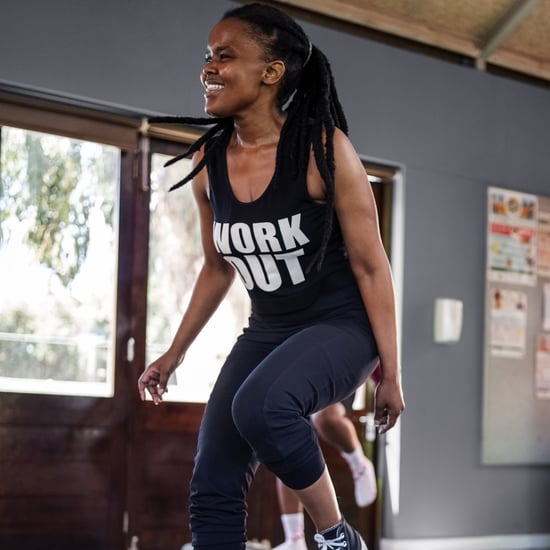Your Guide to Prehab Injury Prevention in Workouts
Worried About Workout Injuries? Here’s How Prehab Could Help

An ounce of prevention is worth a pound of cure — that's how the saying goes — and it makes a lot of sense when it comes to workout-related injuries. It's also the whole idea behind the fitness phrase "prehab."
By prepping your body and muscles for more advanced movements and exercise through prehab, you can theoretically prevent aches, pains, and injuries. So, if jumping into an intense HIIT program has you weary about your knees or ankles, prehab might be something to look into.
"Prehab refers to identifying and addressing movement pattern limitations before performing more advanced movements," Matt Delaney, CSCS, National Manager of Innovation at Equinox, and licenced massage therapist, says.
Within individual workouts, he says it can also be referred to as activities that integrate a new range of motion before performing more dynamic movements.
So, what are some common prehab exercises?
Overall, Delaney says there are no exercises that are specifically labeled as prehab. "The movements in your program should be selected to address your specific needs [and] goals, and you should strive to enter into a pattern at the appropriate threshold."
For example, he says if a trainer notices a runner lacks the ability to stabilise the pelvis, they might recommend a side plank to work on core strength and to engage the lateral line.
Brian Miller, a NASM-certified personal trainer and a trainer at Switch Playground in NYC uses bear crawls as an example of a prehab activity, as they help promote flexibility, mobility, and movement in the core, shoulders, and lower body.
"Bear crawls help provide a basic movement that requires the whole body to participate in," he explains. "It's perfect if you don't have much time but want to reap the benefits of prehab exercises."
Performing lateral band walks is another example. Miller says it's a great prehab exercise for the lower body, specifically the glutes, as glute activation comes into play with movements like squats and deadlifts.
"Incorporating these exercises into a dynamic warm-up, following a foam rolling session, can help properly prepare the body for whatever activity is about to occur," he says. "But if you have a few minutes when you wake up, go to bed, or have a 20-minute break, these can all be applied."
While prehab is a relatively simple concept, you should never self-prescribe an injury prevention program. Always consult with a certified professional if you have any concerns about entering an advanced workout program, or upping the intensity of your workouts.
Delaney stresses: "The best way start any program is with a thorough movement assessment, so you can know where to focus your attention and ensure you are progressing appropriately."







